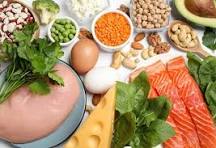
Pelicans in the Caribbean
Before writing about the next specific supplement (spermidine), allow me to describe my vision. As always, I will explain the place of supplements in the whole chain of life-improving and extending measures.
1.Introduction
You have the big five. I do not mean the African safari animals, but the five groups of interventions that are important for longevity. The big five for longevity are food/drinks, stress, sleep, exercise and social life. Do these five well, and you increase your chances for a longer and more healthy life. You will especially boost your chances for a much longer healthy lifespan. Do not underestimate the importance of this last point. Studies indicate that more than half of the people above 60 in the Western world face serious health problems. These issues prevent them from enjoying the remaining 20+ years of their life as they should and could.
2. Potential of supplements in general
So what about supplements? The so-called 6th wheel on the wagon. Some supplements are there to reinforce the good work within the big 5. Some are often useless, like vitamin C or Omega-3. However, other supplements offer hope. Hope for a much longer life. Many studies are ongoing and life is too short to await the results of all of them. Promising results are coming in in an accelerating way, also thanks to AI. I am one of those who is open to taking certain supplements. Their claimed effects are not yet scientifically proven. I follow the no-harm principle and go for it.
Earlier I write about two lesser-known supplements that give me much hope: berberine and fisetin. Fisetin might add 10 – 40% to the lifespan and improve health quality as well. It also mimics the effects of intermitted fasting. Berberine supports blood sugar management and its other potential benefits. It interests me mainly because it may slow aging. It could extend life expectancy by years, not just months.
This time I write about spermidine, a supplement I take once daily (5 mg).
3. What is spermidine?
Spermidine is present in all organisms, including plants, animals, and microorganisms. In humans, it can be obtained from dietary sources such as whole grains, soy products, aged cheese, and mushrooms. Other sources include legumes and certain fruits and vegetables. It is also synthesized endogenously in the body.
4. Its name? Yes, indeed
The name “spermidine” originates from its discovery in semen. Spermidine is a polyamine compound that was first extracted from seminal fluid, which led to its name. The Latin word “sperma” means semen. “Spermidine” was named this way because it was initially identified as a significant component in sperm cells.
5. Spermidine: I go for autophagy
Spermidine is a longevity agent in mammals due to various mechanisms of action, which are just beginning to be understood. It is a naturally occurring polyamine compound found widely in living cells. It stabilizes DNA and facilitates protein synthesis. These actions make it essential for maintaining cellular functions.
The claims about spermidine are manifold; for me the most appealing part is the role it plays in autophagy. Autophagy is a cellular process that involves the degradation and recycling of damaged cellular components, helping to maintain cellular health. Spermidine may contribute to improved cellular function by promoting autophagy. This improvement could play a role in slowing down the aging process. It may also potentially increase lifespan. I am all in favor of this!
It is not only autophagy what spermidine influences. Research suggests that by promoting autophagy, spermidine might contribute to increased lifespan and cardiovascular health. It may also offer neuroprotection, including cognitive function, and metabolic health. More human studies are needed to confirm these effects. There is also evidence found for impact on other mechanisms. These include inflammation reduction, lipid metabolism, and regulation of cell growth and proliferation.
6. What are polyamines?
Polyamines are organic compounds characterized by having two or more amino groups. They are essential for cellular functions and are found in all living organisms. The most common polyamines in biological systems are putrescine, spermidine, and spermine.
7. Why take spermidine?
Your body produces spermidine and food provides it as well. However, as we age, the body’s ability to synthesize spermidine decreases. This reduction may contribute to some age-related cellular and physiological changes. This decline is part of why researchers are looking into spermidine supplementation. They are exploring dietary sources to promote healthy aging. These sources may support cellular health. For me it an important reason to take this supplement with, as said, the main focus on autophagy. “Clean those dead cells” is a slogan that appeals to me. I am very willing to take the necessary supplements.
8. Spermidine uses in treatment of diseases.
In recent years, spermidine has attracted attention for its potential health benefits, particularly in the context of aging and longevity. Spermidine is reported to reverse the aging process and enhance cardiovascular in animal studies. Aged mice administered spermidine had healthier hearts and improvements in metabolic activities. Numerous research studies have investigated the anti-aging properties as well. Several animal studies have demonstrated that administering spermidine can aid in the prevention of certain cancers. It seems that first human studies confirm the findings of animal research.
The body’s spermidine synthesis decreases with age. It becomes progressively difficult for your body to activate autophagy without an adequate spermidine level. This contributes to aging. This can be regenerated for older adults by consuming a diet rich in spermidine or, more effectively, by taking supplements. Synthetic spermidine mimics the naturally occurring molecules in every way.
9. Side Effects?
Because spermidine is a naturally occurring substance in the body, it is thought to be completely safe. Long trials have shown that the supplement has no adverse side effects. This is true even when taking high doses, up to 6 milligrams daily.
10. Dosage?
There is a debate among specialists about the required dosage. Global estimates of spermidine consumption range between 5 mg and 12 mg per day via dietary sources.
As mentioned spermidine is a naturally occurring polyamine found in various foods, particularly certain vegetables. Some of the vegetables with the highest spermidine content include broccoli. Cauliflower also contains a few mg per 100 grams of fresh weight of vegetables.
Dr. Sinclair takes about 1 mg of spermidine per day. I do 5 mg per day.
11. Safety
The “no-harm” approach is central to my decision to use any supplement. I take several supplements based on “hope” when there are credible indications that they might provide certain benefits.
However, I only take supplements considered completely safe and that do not interact with any medication. This seems to be the case with spermidine, as far as I could find out. It’s important to note that what holds in animal models doesn’t always directly translate to humans. This is due to differences in physiology and dosage responses. So, more research is crucial to confirm these effects in humans.
13. Weak Points of Supplements (in general)
Supplements generally have two weak points:
1. Their production is not officially regulated or controlled by health agencies, so it’s crucial to buy from reputable companies. My advice is not to be guided by price.
2. Many health claims are not scientifically proven.
14. Which is better, NMN or spermidine?
Spermidine powder inhibits aging via autophagy, but NMN powder can have anti-aging benefits by increasing NAD+ levels in the body. Scientists suggest there may be synergistic benefits when NMN and spermidine are combined. This combination might be a potential strategy for enhancing health in elderly people. Interesting and something I follow closely.
Take care and live a happy and healthy life,
Robert, your health friend

Flamingos in the Venezuelan estado de Falcon


















